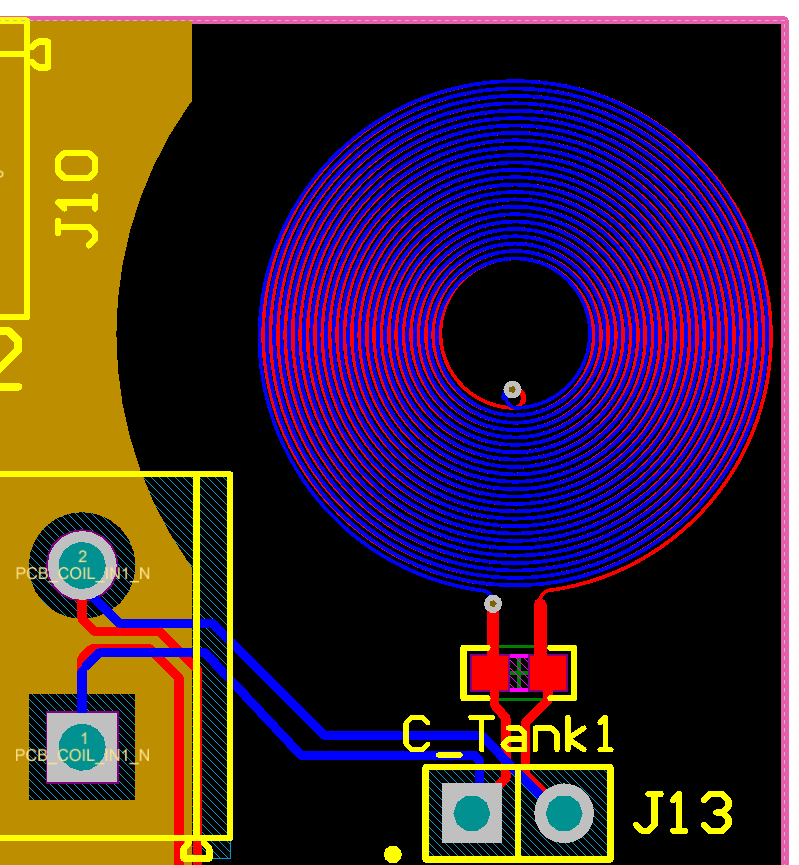SNOA930C March 2015 – May 2021 LDC0851 , LDC1001 , LDC1001-Q1 , LDC1041 , LDC1051 , LDC1101 , LDC1312 , LDC1312-Q1 , LDC1314 , LDC1314-Q1 , LDC1612 , LDC1612-Q1 , LDC1614 , LDC1614-Q1 , LDC2112 , LDC2114 , LDC3114 , LDC3114-Q1
4.2.1 Minimize Conductors Near Sensor
To keep the RP as high as possible, keep ground planes and any thick traces away from the sensor — minimize any conductors within at least 30% of the diameter of sensor. This includes ground planes and power planes. Do not place a ground pour around the sensor or use thieving on the board. In Figure 4-2, the ground pour on the inner tan layer has been recessed away from the coil to reduce coupling to the inner grounds.
 Figure 4-2 Minimize Copper Around the Sensor
Figure 4-2 Minimize Copper Around the Sensor